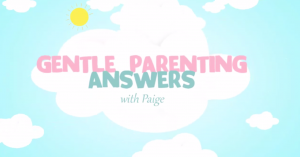
Source: Tupain 58
For sure, the pace has quickened when it comes to raising children.
I was born in the late 70s, and I feel sure that my generation is the first to parent children born into such a highly digitized, all-access era.
My daughters can turn on a computer or a TV on any given day and see aspects of life – including sexuality, violence, drug usage, and a cadre of lifestyle practices – that we, as parents, would rather have the luxury of addressing over time, and in stage-appropriate contexts, instead of having our children happen upon them.
And it’s not just about media either.
Today, having a cell phone or an iPad gives a seven-year-old vastly more access to the world than any freshly licensed 16-year old driver could get into their car and find.
My ten-year-old knows more about Japan and Russia from studying the origins of certain anime and manga productions, for example, than I ever learned in my college-educated life.
Truth is, we are raising adults, not children.
And a strong sense of confidence and comfort in making choices in accordance with their own desires – also called autonomy – is a critical life skill for our children to begin to understand and embody.
Children today have plenty of access, which to some extent equals plenty of power.
Power to create their own personas online and have it reacted to by their peers and the general public. Power to minimize (if not remove) geography as a limitation to accessing information. And power to potentially surpass their parents’ knowledge in digital communications, which can put them in positions of power in the home.
The question is, how much power is too much power?
As technology swiftly erodes the once heavily guarded access gate to information about virtually every topic, autonomy becomes a skill that children need sooner – and perhaps more urgently than their parents did.
If you’re nervous that autonomy is the gateway to disrespect or lack of appreciation for the parent-child dynamic, or if you’re just not sure where to start when it comes to nurturing autonomy in your child, here are three ways you can start making room for the practice of this vital life skill.
1. Understand Your Child’s Key Emotional Triggers
This is not nearly as psychologically rooted as it sounds.
Simply, this suggestion is about knowing what tends to send your child from somewhat rational to seriously riled up.
When my eight-year-old, Sage-Niambi (Sage), gets upset about not getting computer time on a given day, for example, she manages that feeling of disappointment by shutting down.
She stops talking; she answers questions in a low, whiny tone; and she basically sits and glares at everyone while she processes her feelings.
Her father or I could tell her to “fix her face” and be grateful that she even has a computer to use, and all of those perfectly valid perspectives.
But here’s how that works against autonomy as a life skill:
The autonomous life skill of emotional wellness is not about stifling or even filtering emotions. It’s about facing and managing emotions.
If I try to force Sage to show emotions that are contrary to her real emotions in the moment, I feed her a lie. I feed her the lie that it’s not only necessary, but expected, that she put on a good face and deal, no matter what.
I don’t agree with that.
And I definitely don’t think that the skill of inauthentic compliance and wearing a mask is what any woman needs to take with her into adulthood.
Her visible discontent is not about her lashing out at me by pouting or whining. Instead, I try (not always successfully, but consistently) to see those instances as opportunities to help her explore and express her feelings – either to me, in writing (journaling), or through a physical activity.
Emotional wellness is important for children, but many of us (adults) forget that.
We need to help children manage their emotions – and giving them some space to express their feelings, without overshadowing the moment with my own feelings of how they should or shouldn’t be reacting, is the only way I know how to do that.
2. Reframe the Threat of Their ‘Why’
When a child asks why we choose to do something, they’re usually asking because they don’t agree with our choice.
Probably one of the most well-known (and overused) responses to a child’s inquiry is “because I said so.” I’ve used that response more times than necessary; believe me, I understand the appeal.
But here’s how that works against autonomy as a life skill:
When we rely on our power (as the final decision-maker) instead of our taking a teaching opportunity, we are focusing on the inconvenience of their questioning.
In other words, we silence our children by using our position of power in our relationship with them, and we miss the chance to potentially explore solutions and explanations together.
“Because I said so” shows a child nothing more than what they already know, which is that you are the person of power in the relationship.
On the contrary, explaining why you said so opens a learning space for three important skills:
Compassion: Offering them the luxury of an explanation (because offering an explanation isn’t always convenient or even comfortable) shows that a person in power (you, in their perception) can still care about someone’s perspectives and make efforts to listen to their concerns.
Critical Thinking: Thinking through and sharing the reasoning behind your choice offers an opportunity to demonstrate critical thinking skills as you explain why you chose the option you chose.
Depending on your child (their developmental stage, experiences, personality, and so on), they may begin to recognize how you factor in other information that they may not have found important.
You’re teaching context and information sorting, which are aspects of critical thinking skills your children can use in all aspects of their lives.
The Right of Self-Expression: It shows them that their opinion doesn’t have to be agreeable to be relevant.
For me, this speaks directly to my daughters’ sense of validation. I want them to get comfortable sharing what matters to them, even if that is inconvenient or uncomfortable for someone else.
Certainly, like all my suggestions, the stage and personality of your child must be factored in. These are not hard and fast rules, but I do think it’s generally better that children get comfortable with knowing that they can have a differing opinion from a person in power without it automatically becoming an adversarial or uncomfortable situation.
I believe the nurturing of those aspects – compassion, critical thinking, and self-expression – make great practice grounds for the humanizing and self-trusting approach to problem solving and decision-making.
Facilitating these practices inside the safety zone of your guidance is a great way to nurture autonomy.
3. Give Your Child Real Choices at Every Age
In addition to computer, Sage loves all things styling.
Color combinations for outfits, clothing design, hair and make-up – they all create a list of exploration options that she consistently takes on with enthusiasm. She was always conscious about what she wore.
Even as a toddler, she would pout and complain if I took out her green shirt and khaki shorts on a day when she wanted to wear her fairy costume or her brown overalls. She would fold her arms and turn her mouth into the perfect upside down “U” at the sight of the offending outfit.
Of course, in this instance, a parent could simply hold firm to their choice in each of those situations, particularly when her outfit of choice didn’t match the weather outside (i.e. fairy costumes in late January).
Or a parent could do what I did most times and lay out three or four options that all fit within the scope of the choices I made for her.
All of those outfits are options, but none of them would be her options, had she been given the choice. Back then, I thought it was pretty brilliant to run that fake choices game.
But here’s how that works against autonomy as a life skill:
Ultimately, I want my daughters to be able to discern between real choices and intentional manipulation.
I don’t want my daughters wavering on their choices as adults. I want them to know how it feels in the pit of their stomachs to stand behind a choice. I also want them to know what it feels like to waver and to have someone else choose for them when they don’t choose for themselves.
I want them to be familiar with both feelings, so that as they mature, they can learn themselves and make choices based on how they want to feel, and what feels best, safest, and most authentic for them.
The illusion of choice and the omission of an explanation behind a choice is often less about instilling autonomy and more about maintaining convenience.
Granted, it’s not always best to give your child a choice, as developmentally, all children may not be ready for certain responsibilities or may not have the benefit of context to help temper their choice.
I wouldn’t allow my toddler to freeze in a fairy costume while we went to the park in January. Instead, I bought thick tights and a bubble vest, and we’d go to indoor playgrounds on her most adamant days.
I honored her choice, and adjusted my choice (from the outdoor park to the indoor playground) to match her choice.
After that, without my having to verbally explain, Sage understood that her fairy costume meant the inside park, and that plenty other options allowed her to play at the outdoor park she prefers. Eventually, she only wanted to wear the fairy costume inside the house or in our backyard.
Problem solved, choices real, child’s autonomy respected.
***
Autonomy, in summary, is a life skill, not a luxury.
Today more than ever, leading by example by respecting our children and making room for confident self-directed freedom – autonomy – is not a luxury we grant our children, but a vital skill they need to start practicing now, in preparation for managing themselves, their time, and ultimately their lives, alongside overwhelming amounts of ever-updating information.
As parents and community members, we’ll get plenty of opportunities to practice a harmony between leaving room for our children to make their own choices and have those choices be supported by us.
Respecting their right to choose is one way we can support children and respect their need for autonomy.
That support doesn’t always have to look like agreement, either. Support can mean discussions around your reasons for concern about any choice they make. Support can also mean allowing your child to make a mistake, so that they can see the results of a choice for themselves.
Essentially, respecting our children’s autonomy is about the line between giving our children space to get comfortable making choices about their own lives and standing in our responsibility to provide boundaries and context within which they can safely explore their environments and respectfully communicate their needs and preferences.
The lines are blurry sometimes. But if we continue to pay attention and choose observation and trust over fear, our children will show us in words and in actions how to give them room to become whoever it is they are meant to be.
[do_widget id=”text-101″]
Akilah S. Richards is a Contributing Writer for Everyday Feminism. She is a six-time author, digital content writer, and lifestyle coach who writes passionately about self-expression, womanhood, modern feminism, location independence and the unschooling lifestyle. Connect with Akilah on Instagram, Tumblr, or her #radicalselfie e-home, radicalselfie.com. Read her articles.
Search our 3000+ articles!
Read our articles about:
Our online racial justice training
Used by hundreds of universities, non-profits, and businesses.
Click to learn more
Most Read Articles
- « Previous
- 1
- …
- 30
- 31
- 32



















